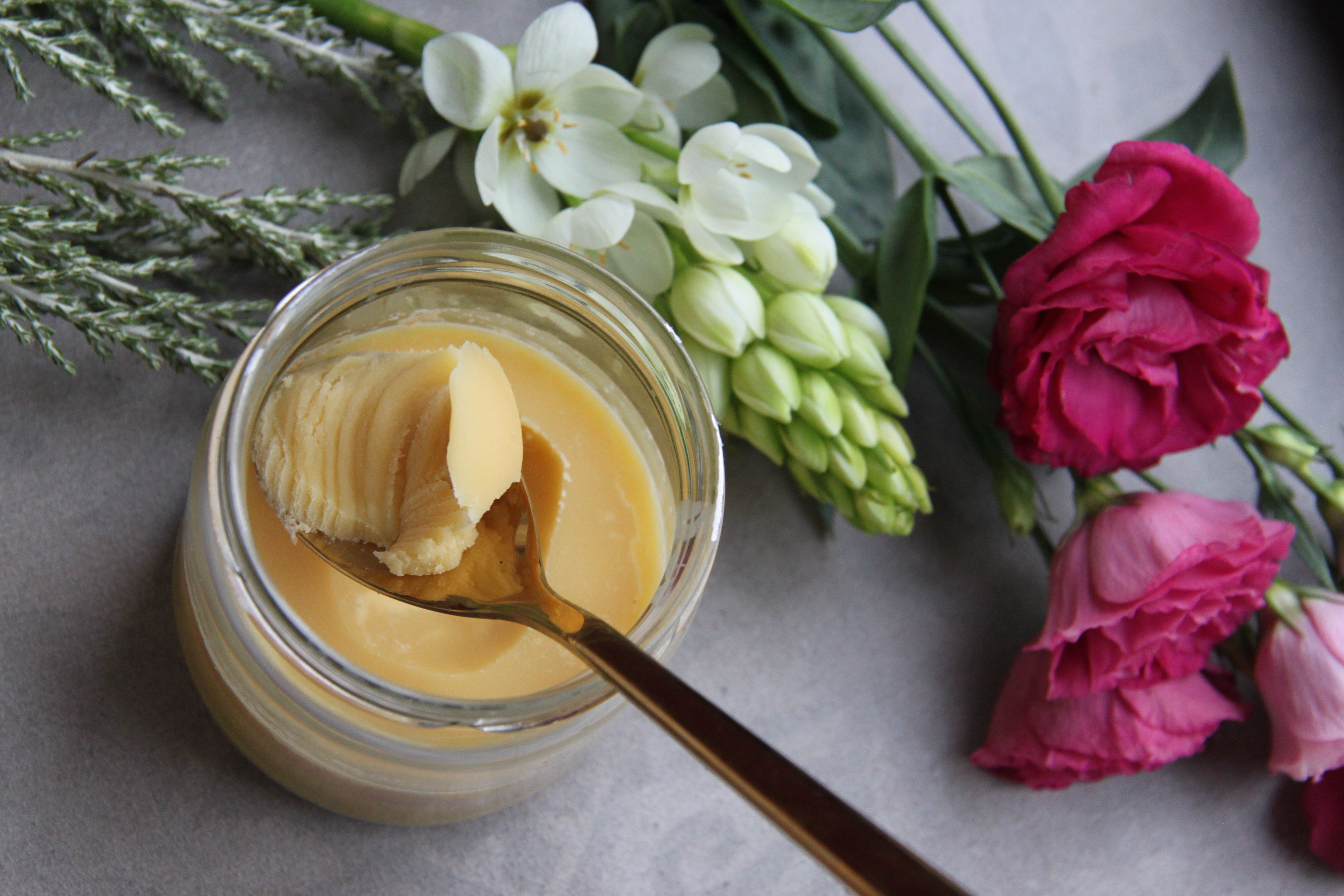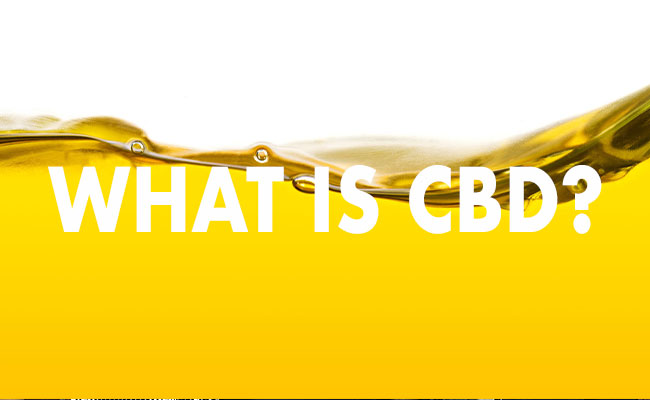
4 Reasons to Use Shea Butter
WRITTEN BY DR. SUSAN EGBERT AND DR. SWATHI
The origins of shea butter
Shea butter originates from lipids that come from African shea tree nuts that have many metabolites that have shown data to help with skin issues. Currently, shea butter is produced from shea trees that are found in semi-arid to arid areas, mainly in Sub-Saharan Africa. Shea butter has been used in food preparation, medicinal, and in cosmetics. Shea butter has been demonstrated to be effective in all skin types, but if you have tree nut allergies, it is best to avoid this ingredient.
Shea butter consists of fatty acids/triglycerides (oleic, stearic, linoleic, and palmitic fatty acids) and other lipid related molecules (triterpenes, tocopherol, phenols, sterols, etc.). Certain metabolites have shown to have anti-inflammatory and antioxidant properties in scientific literature . Triglycerides are an important indicator of whether or not the butter is usable in a particular formulation. How this gets measured is through decomposition of the triglycerides into free fatty acids.
In one way to prepare shea butter, some people boil the roots, grasses, or branches in addition to the shea nuts. What this does to the butter is to enhance the melting point of the butter and allow it to not degrade during the preparation. One study mentions that since the melting point of the butter is close to the body temperature of our bodies, it makes it more suitable as a base for ointments and medicines.
The benefits of shea butter
Hydrates the skin
When people say “hydrating the skin,” they are referring to the amount of water content that is in the skin. It is important for the skin to have water so that it can stay strong and elastic. There are many ways that the skin can lose hydration whether it is naturally or by diseases like dermatitis. Shea butter acts as an emollient which can help act as a barrier in order to prevent water from leaving our skin.
Filled with antioxidants
Shea kernels that are used in the process of making shea butter are rich in tocopherols (otherwise known as vitamin E) and polyphenols that have been noted to have antioxidant properties. Tocopherols primarily work in our body to help get rid of free radicals. Free radicals (if in high amounts) can cause oxidative damages to cell membranes and the skin. To learn more about potent antioxidants in skincare, check this out.
Calms irritated skin
Triterpene alcohols (like lupeol and alpha/beta-amyrin) have been shown to have anti-inflammatory properties. Although triterpene alcohols can be found in other plants, shea butter has one of the highest amounts recorded. Especially with how stable shea butter is and the properties with it, it opens a way for shea butter to go into multiple forms like sunscreen and other products. Polyunsaturated fatty acids metabolize in our epidermis and if we are deficient in it, then we could expect our skin to be scaly and itchy. There are other mechanisms that the fatty acids work on too that will help with the inflammation.
May slow anti-aging properties (think: scarring, fine lines, wrinkles)
Have scars that are reducing your self confidence? Well, we may have an answer for you. Before we get to how shea butter can help, we have to talk about the phases of wound healing. There are four phases: hemostasis, inflammation, proliferation, and tissue remodeling.
The phase to focus on in this context is tissue remodeling, as the collagen that gets released is what is forming the scar. Shea butter helps promote the normal skin to reform hence why you may see a reduction in your scars with usage.
As we’re aging, our skin is changing. Thinning, loss of elasticity, roughness, wrinkling, etc are some of the symptoms that people experience as they get older. To emphasize the first point, using shea butter would help with keeping the skin strong. Additionally, shea butter helps increase the collagen and new skin production which will also help with the aging skin.
The bottom line
In conclusion, shea butter has a lot of benefits within it that could help us with a multitude of problems–especially this time of year. With its versatility, it is no wonder its use in certain formulations for functional skincare (also known by some as neurocosmetics). As shea butter gets more popular, only time will tell on the number of clinical studies investigating how else we can incorporate it into our daily skincare regimen.
References
-
Honfo FG, Akissoe N, Linnemann AR, Soumanou M, Van Boekel MA. Nutritional composition of shea products and chemical properties of shea butter: a review. Crit Rev Food Sci Nutr. 2014;54(5):673-686.
- Peers KE. The non-glyceride saponifiables of shea butter. J Science of Food and Agriculture, 1997;28(11), 1000–1009.
- Gasparri F, Leonardi R, Teglia T, et al. [Shea butter: Characteristics of refined products for cosmetic use.]. La Rivista Italiana delle Sostanze Grasse, 69: 201–204.
- Tano-Debrah, K., and Ohta, Y, “Enzyme-assisted aqueous extraction of fat from kernels of shea butter tree (Butyrospermum parkii )”, J. Am. Oil. Chem. Soc,.1994;71:979-983.
- Njoku OU, Eneh FU, Ononogbu IC, et al. Compositional and Toxicological Studies on Shea Butter. J. Nutraceuticals Funct. Med. Foods. 2000;2:33–39.
- Kapseu C, Tchiegang C, Parmentier M, et al. Evolution du Choix technologique par les femmes. Université de Ngaoundéré, 2001.
- Letchamo W, Khoo BK, Hartman TG. Evaluation of the quality of West African shea butter (Vitellaria paradoxa) Int Soc Hortic Sci. 2007;756:273–288.
- Mbaiguinam, M., Mbayhoudel, K., & Djekota, C. Physical and chemical characteristics of fruits, pulps, kernels and butter of shea Butyrospermum parkii (Sapotaceae) from Mandoul. Southern Chad. Asian J Biochem, 2017;2(2):101–110.
- Akihisa T, Kojima N, Katoh N, et al. Triterpene Alcohol and Fatty Acid Composition of Shea Nuts from Seven African Countries. J Oleo Sci. 2010;59:351–360.
- Megnanou RM, Niamke S, Diopoh J. Physicochemical and microbiological characteristics of optimized and traditional shea butters from Côte d’Ivoire. Afr J Biochem Res. 2007;14:41–47.
- Chukwu O, Adgidzi PP. Evaluation of some physico-chemical properties of Shea-butter (Butyrospermum paradoxum) related to its value for food and industrial utilisation. Int J Postharvest Technol Innov. 2008;1(3):320–326. doi: 10.1504/IJPTI.2008.021466.
- Greenwood, M. Shea Nuts and Shea Butter. Bulletin of the Agricultural Department, Nigeria 1929:59–100.
- Badifu GIO. Lipid Composition of Nigerian Butyrospermum paradoxum Kernel. J Food Comp Anal. 1989;2:238-244.
- Renard R. UFR de sciences pharnacuetiques. Universite de Bordeaux II. Le buerrede karate. Thése de Doctorat en Pharmacie; 1990; 100.
- Olaniyan AM, Oje K. Quality characteristics of shea butter recovered from shea kernel through dry extraction process. Journal of Food Science and Technology-Mysore, 2007;44(4), 404-407.
-
Lin TK, Zhong L, Santiago JL. Anti-Inflammatory and Skin Barrier Repair Effects of Topical Application of Some Plant Oils. Int J Mol Sci. 2017;19(1):70.
- Alander J, Andersson AC. The Shea Butter Family – the Complete Emollient Range for Skin Care Formulations. Cosmetics and Toiletries Manufacture Worldwide, 2002;28–32..
- Alander J. Shea butter-a multifunctional ingredient for food and cosmetics. Lipid Technology, 2004;16(9), 202-205.
- Bonkoungou EG Monographie du Karité, Butyrospermum paradoxum (Gaertn.f.). 1987.
–
This article was edited by Dr. Swathi and was written by Element Apothec Scientific Communications Intern, Dr. Susan Egbert. She is a pharmacist and Doctor of Philosophy (PhD) candidate studying Natural Products Chemistry at University of Manitoba in Winnipeg, Manitoba, Canada.











